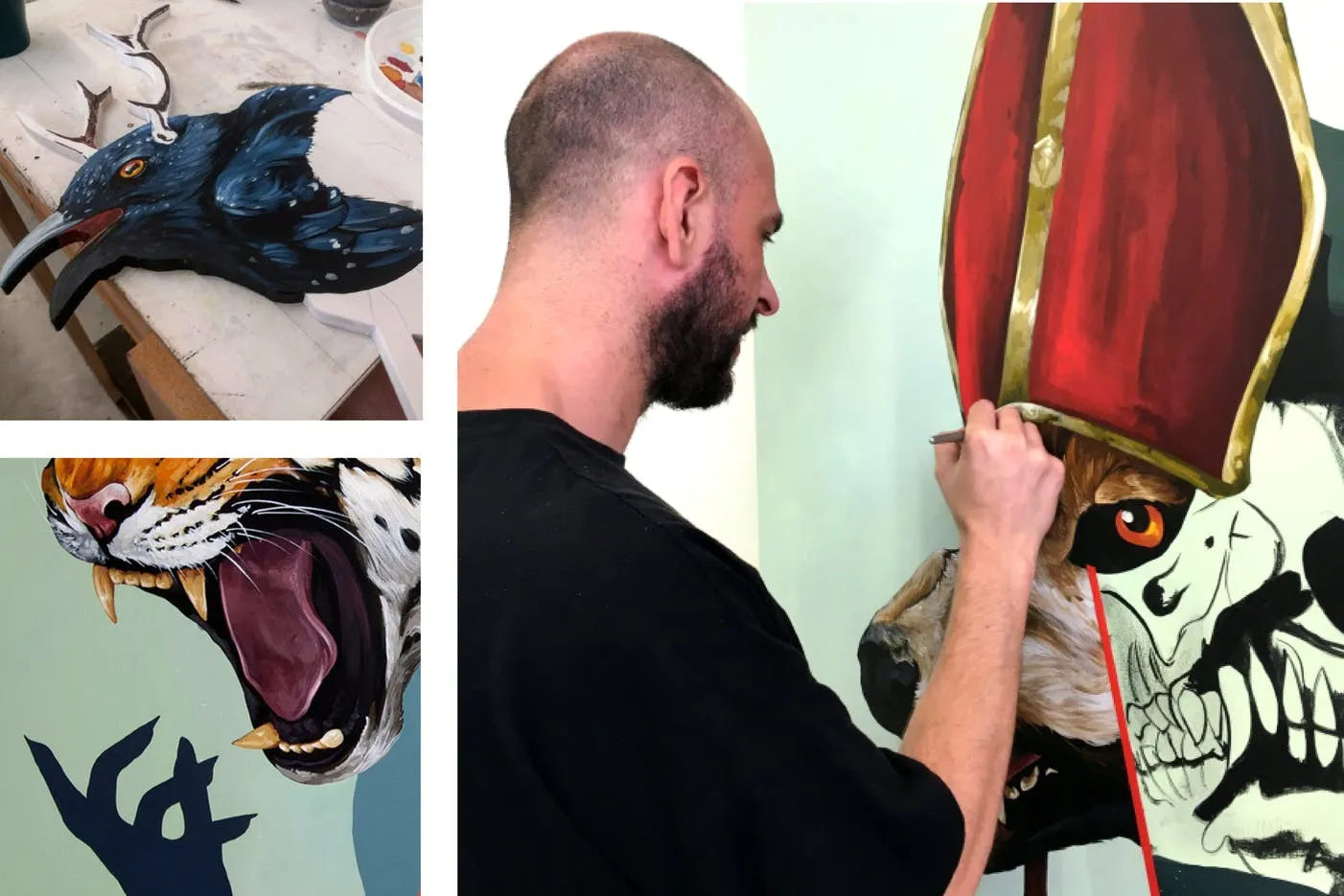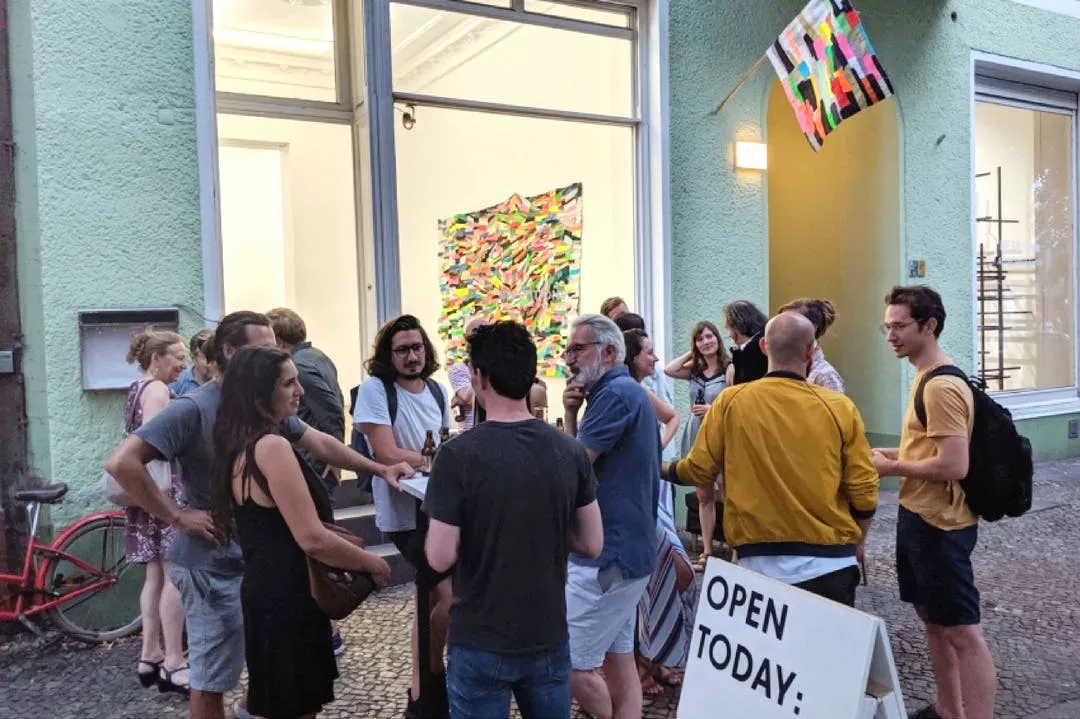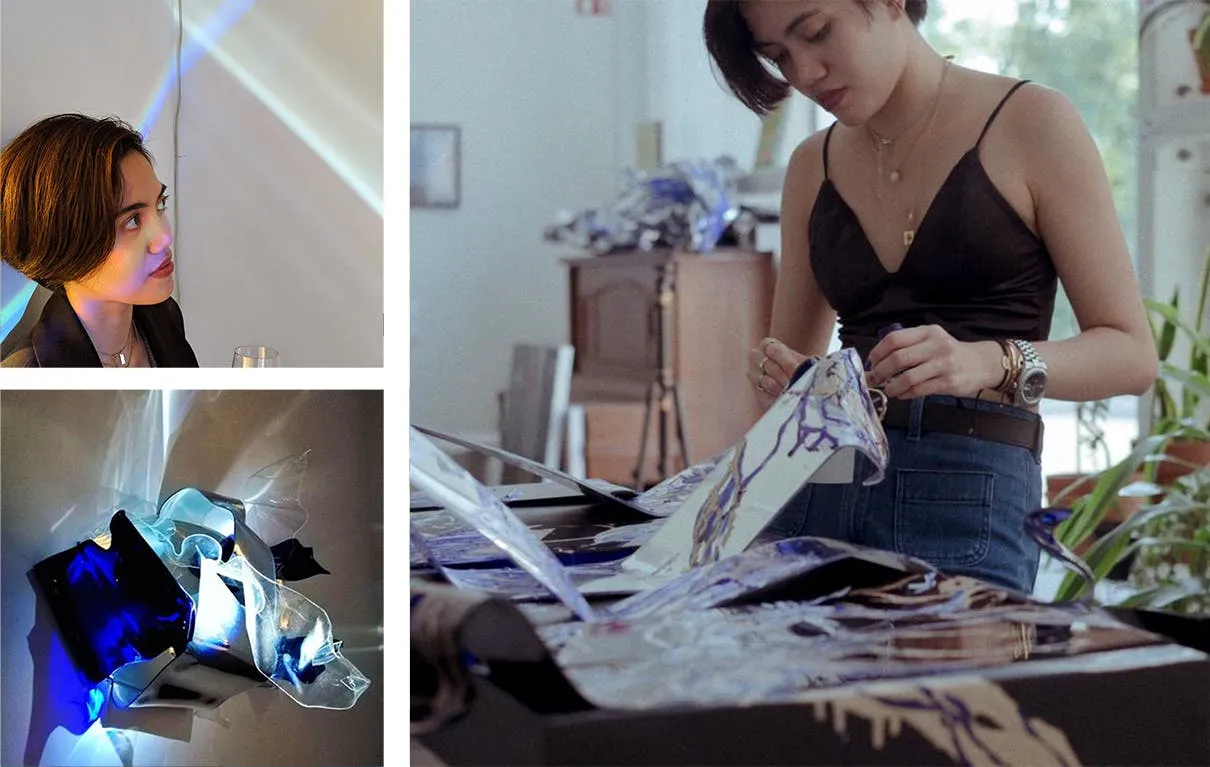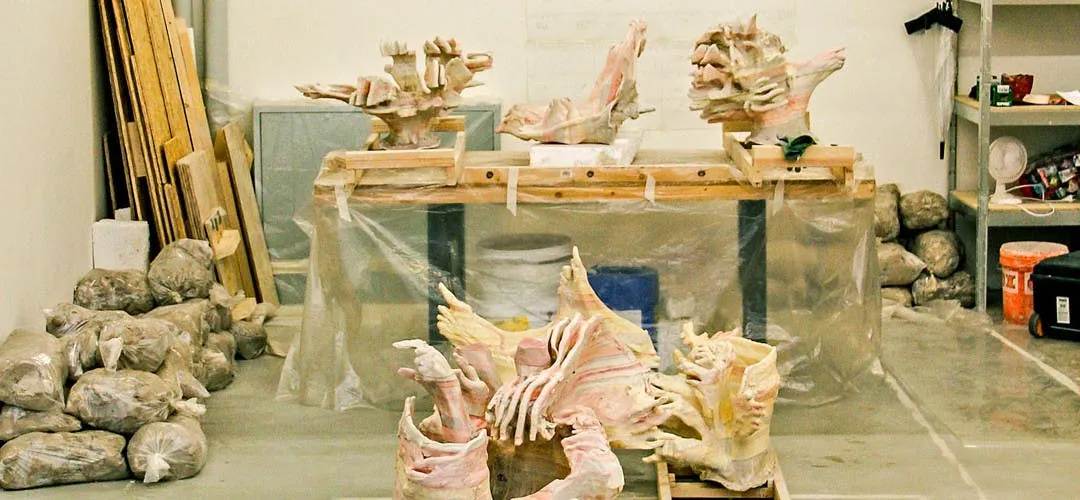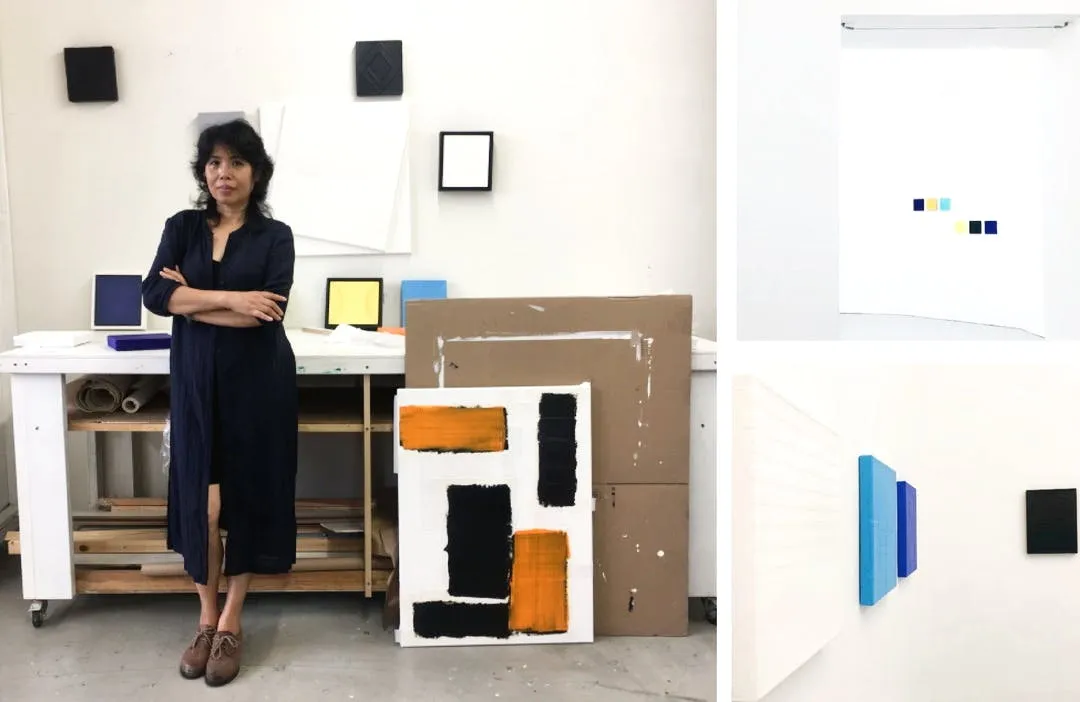
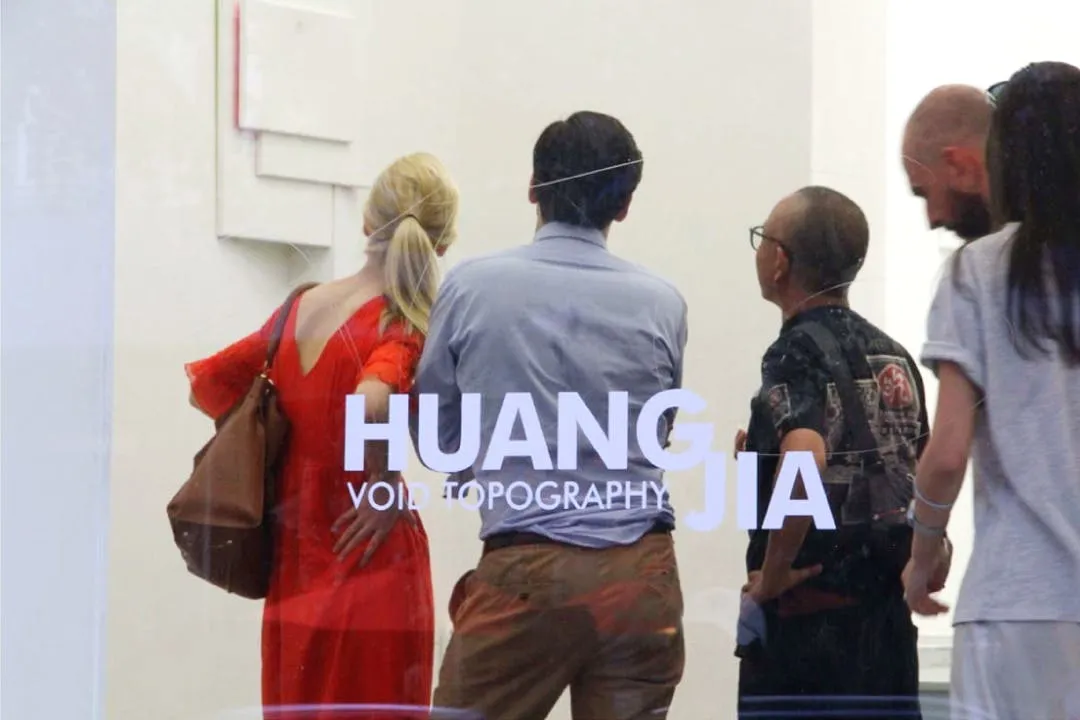

The coGalleries Artist Residency Berlin program aims to stimulate exchange between international artists, curators, art organisations and art institutions. The program creates conditions for artists to succeed by offering professional support with networking, production, and presentation of their work. Depending on the type of artist residency, it ends either with a solo exhibition in our art gallery, located in the center of Berlin's famous gallery district or with a major studio presentation.
Residents will have 24/7 access to our 160 sqm artist studio loft. Depending on the project we also have other, smaller neighbouring private studios. The facilities are filled with natural light and the studio loft is equipped with a beautiful kitchen, bathroom, large work tables, and a cozy lounge area. The studio is a shared work-space, allowing for peer-to-peer exchange and potential collaborations between artists, researchers and curators.

Located in vibrant east Berlin, the studio is part of the art compound FAHRBEREITSCHAFT, a dynamic environment surrounded by the work-spaces of emerging and established artists. The studio neighbours one of Berlin's leading contemporary private art collections, “Haubrok Collection”, a fine art printing studio "Artificial Image" and Berlin's finest art framer "Bilderrahmen Neumann". Furthermore, the compound houses several cultural and creative companies, a cnc wood workshop, a boat builder, carpenters, architects, interior designers, a car repair shop, a professional music studio and a dance company. Our Berlin artist residency studio is just a 20 minute tram ride from the art center of Berlin-Mitte.
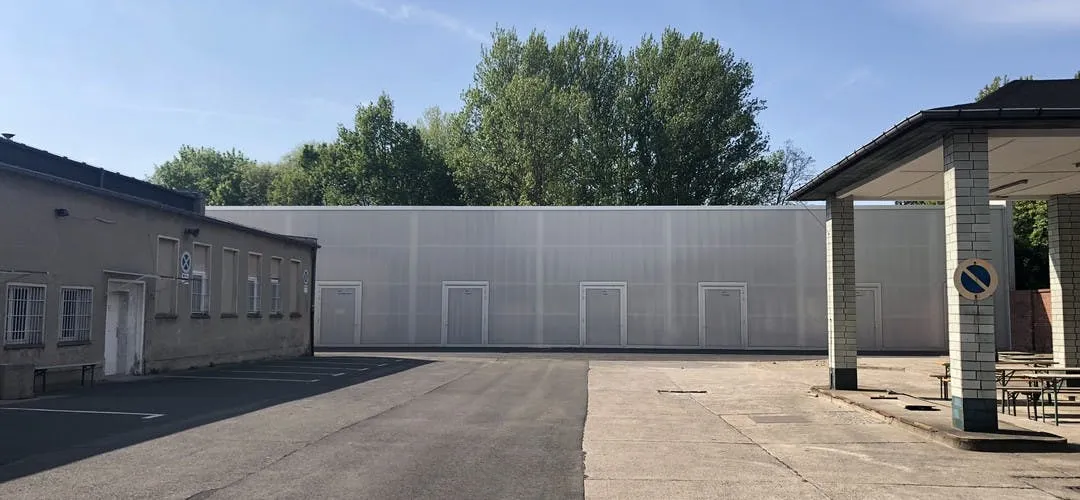
We work closely with partnering galleries, public institutions, foundations, curators, art advisors, art organisations and visual artists within the field of contemporary arts throughout Europe, Africa, China, Brazil, USA and the Middle East. Further down the page you can find updated open call postings for our international residency and partnering open calls. Artists participating in our artist residency become part of our network - a strong circle of friends and collaborators. We support and try to find other opportunities after the residency, make introductions and keep them involved in future coGalleries’ projects.
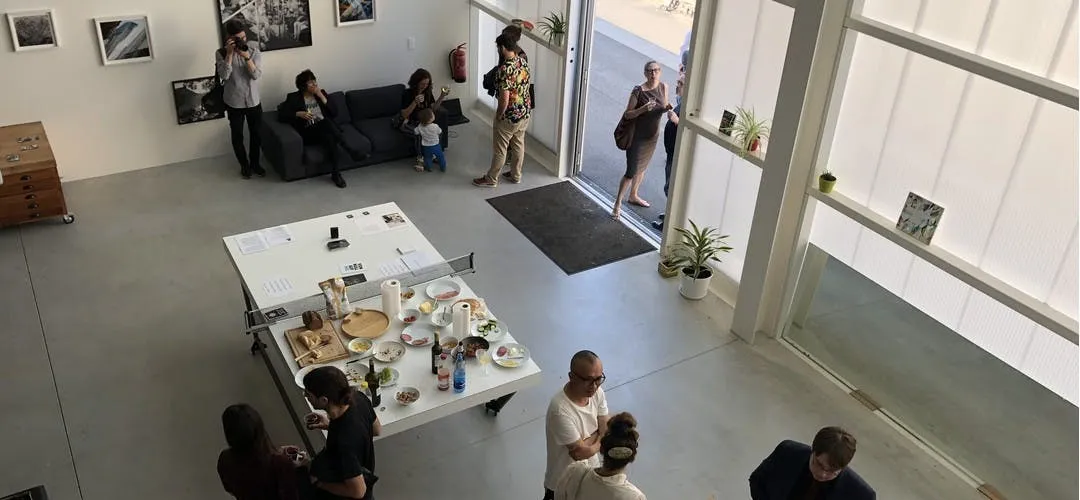
We do our very best to support the residency artists. Naturally, the quality of collaboration will be strengthened by proactive artists who put effort into interacting with us during their stay.
Residency artists will meet insiders of the art world through events such as studio visits, gallery tours, panel discussions, portfolio viewings, openings, and other art-related events. Depending on your specific artist residency project, we will try to seek opportunities for any of our selected residents to work with our partners in Berlin and other cities. Each artist in residence is given the opportunity to present their work either in participating in an exhibition or at an open studio event in our studio loft. The open studio event will be scheduled during the residency, a possible exhibition is usually scheduled towards the end of the resident’s stay.
Besides that, we support each resident in finding further opportunities in other group activities during the residency program or afterwards. Residence activities such as artist-led workshops, studio visits, video screenings, artist talks, and performances can be hosted in either a partnering art space or our studio loft. In this way, we ensure that our residents gain insight and connections into Berlin’s vibrant art scene.

We are looking for inspiring and professional artists, researchers, and curators to support the residents’ projects through meaningful discussion, critical feedback, and curatorial suggestions. coGalleries works to broaden its local and international network through these personal interactions. We assist residents in realising artistically and technically complex projects and provide them a support base by helping with translations, sales, promotion and organisation.
All studios are equipped with high-speed internet, a printer, and all necessary tools for working with wood, clay, paper, etc. (the materials themselves are not included).
We would like to emphasise that we are looking for professional international artists to collaborate with. Our team has a long track record in commercial and non-commercial practices. However, with our artist in residency program, we strive to boost artistic careers and provide value and connections. coGalleries connects to art professionals, curators, and artists to offer support and feedback and to foster new connections for all of us. Artists will become part of Berlin’s international arts community and gain insight in the Berlin art world and beyond.
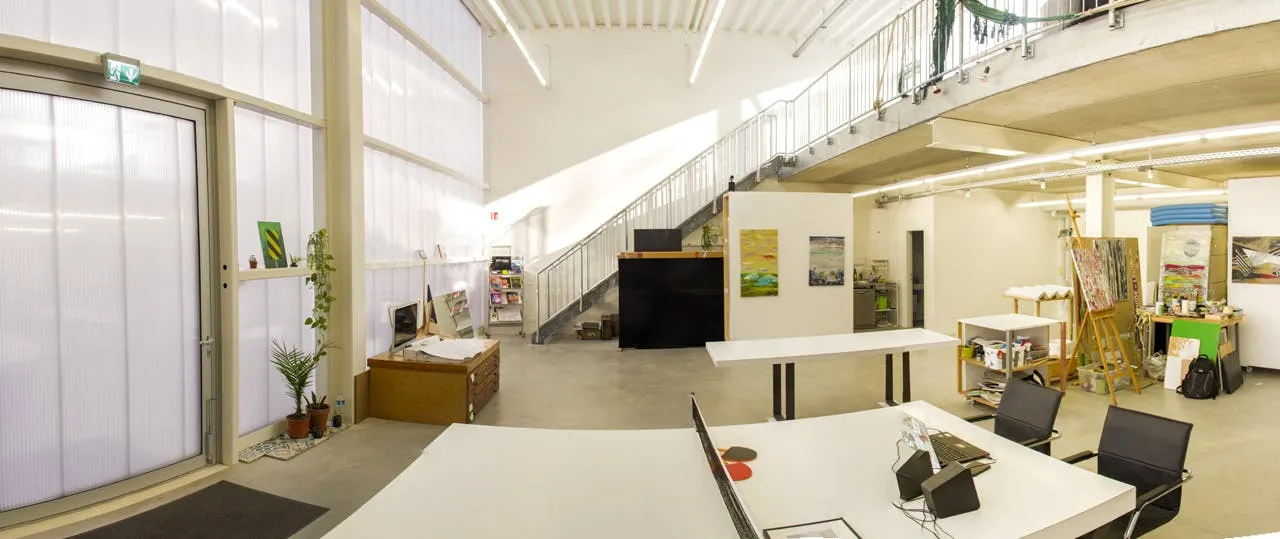
We encourage conversation, dialogue and exchange across disciplines. Therefore, we do not explicitly focus on one particular media or medium. We accept artists from a range of backgrounds such as painting, sculpture, photography, urban art, installation, performing arts, video, literature, research-based practices, as well as curatorial projects. Artist collectives and groups are also encouraged to apply. We welcome applications at all times, as residents are accepted on a rolling basis. The primary languages during the artist residency are English and German, but we also handle fluently Spanish, Portuguese, and Chinese.
We have 2 types of fee-based Residency opportunities. We like to emphasise that we don’t run the residency program to make a profit as the fee is used to cover part of the costs we have while providing the program (rents, staff, PR costs, opening ceremonies etc.).

Fee: 600,00 € / per month (including 19% VAT tax)

Fee: 1400,00 € / per month (including 19% VAT tax)
We can arrange housing for you during your residency period based on your budget and depending on availability on the market. The accommodation fee needs to be paid separately and additionally from the residency fee. Please let us know during your application if you wish us to find housing for you.
Costs: approx. €900,00 per month
Costs: starting from €600,00 per month
All residents can apply via the application form. We accept applications on a rolling basis but we also run open calls on specific topics. We are well-planned ahead but also allow a high level of spontaneity. We always try to make it happen.
The three attached JPG images in the application form should show your artistic process and exhibition documentation. Granted your selection, these images might be used on our social media channels, e-mail campaigns, print invitations, websites and catalogues. File names should include exactly in this order your first and last name, the title of the work, the year, and the photo credits.
For questions and any type of uncertainties, write to us at [email protected].
We suggest residents to seek funding in advance through grants and sponsorships. You can find a list here with funding opportunities for scholarships, stipends, fellowships, and grants that are offered internationally.
We aggregated a list of possible funding opportunities for you.
Sign up to our Residency Newsletter and be the first one to know about our new Open Calls and Artist Opportunities by clicking here.


